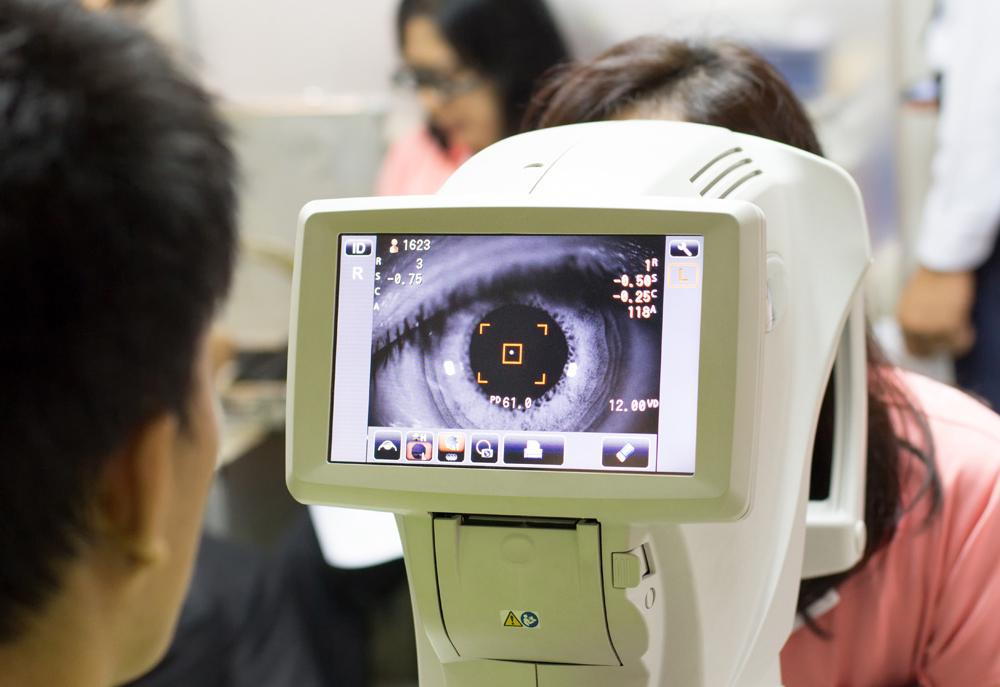How Is Dry Eye Syndrome Diagnosed And Treated?

- posted: Feb. 06, 2024
How Is Dry Eye Syndrome Diagnosed and Treated?
Dry eye syndrome is a common condition that can cause discomfort, irritation, and blurry vision. However, early diagnosis and proper treatment can reduce your symptoms and improve your eye health. Before visiting Neuro-Ophthalmology of Texas at Eye Wellness Center in Houston, TX, for an eye exam, learn about how dry eye is diagnosed and treated below:
Diagnosing Dry Eye Syndrome
Diagnosing dry eye involves a comprehensive approach by an ophthalmologist. This process typically begins with a detailed discussion of your medical history and current symptoms. One of the eye doctors at Neuro-Ophthalmology of Texas at Eye Wellness Center will perform a through eye exam, which includes:
● Slit-lamp examination: This microscopic evaluation assesses the tear film quality, eyelid health, and corneal surface for signs of dryness and damage.
● Tear production tests: Measurements like the Schirmer's test gauge tear quantity, while tests like tear break-up time (TBUT) evaluate tear evaporation rate.
● Epithelial staining: Special dyes highlight any damaged areas on the cornea, indicating the severity of dry eye.
These examinations allow the ophthalmologists at our practice to diagnose dry eye and determine the underlying cause, such as insufficient tear production or excessive evaporation. Understanding the specific type of dry eye is crucial for tailoring an effective treatment plan.
Treatments for Dry Eye Syndrome
Your treatment will depend on the root cause of your dry eye syndrome and its severity. The eye doctors at our center may recommend the following:
● Artificial tears: Lubricating eye drops replenish moisture and provide temporary relief. Different formulations cater to specific needs, meaning thicker eye drops may be used for severe dry eye.
● Prescription medications: In some cases, medications like cyclosporine A can stimulate tear production and address inflammation.
● Lid hygiene: Meibomian gland dysfunction causes the eye glands to clog and can lead to dry eye. Regularly cleaning the eyelids with a warm compress can help clear these blockages and improve tear quality.
● Punctal plugs: Tiny inserts temporarily block tear drainage ducts, allowing natural tears to remain in the eyes longer.
● Amniotic membrane regenerative therapy: We can use the special cells found in the amniotic membrane harvested after the birth of a healthy child to help relieve your dry eye symptoms.
Contact us for an Appointment Today
Don't let dry eye hinder your quality of life. Contact Neuro-Ophthalmology of Texas at Eye Wellness Center in Houston, TX, at (713) 942-2187 today to schedule a comprehensive eye exam. The experienced ophthalmologists at our practice will provide an accurate diagnosis and personalized treatment plans to ensure your eye health and comfort.
Hours of Operation
Our Regular Schedule
9:00 am - 4:00 pm
9:00 am - 4:00 pm
9:00 am - 4:00 pm
9:00 am - 4:00 pm
9:00 am - 4:00 pm
Closed
Closed
Location
Find us on the map!
Neuro-Ophthalmology of Texas at Eye Wellness Center
7500 Beechnut St # 175
Houston, TX 77074
